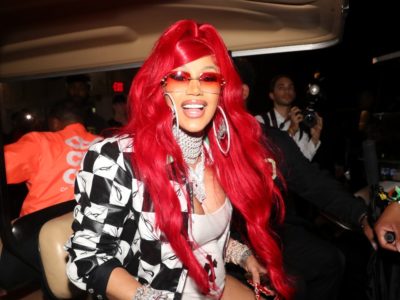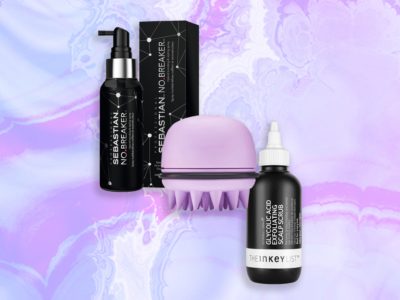
Matrix artistic director Michelle O’Connor (who has worked with Laverne Cox) emphasizes that clarifying shampoos are important. “The curl community is constantly putting curls, elixirs, butters, gels, and creams on the hair. These things attract dust and pollutants from the air and they can build up and be heavy on the hair,” she explains. “Every few weeks, a good clarifying shampoo will give your hair a fresh start along with your scalp. There are specially-designed clarifying shampoos that are gentler and won’t strip your curls.”
Cosmetic chemist Ron Robinson of Beatuystat.com agrees that loading your hair with product could create an environment for pollutants to catch onto your strands, “especially if those products are sticky.” If you’re looking for a clarifying shampoo to help fix it, he suggests “a sulfate-free clarifying shampoo that will sufficiently rid the build-up without stripping the hair of oil.”
Curate a Routine
Finding the right product combination can take a bit of time and may vary from wash to wash depending on how you plan to wear your hair. Remember, the style you chose — straight, curly, twist-out, braids, etc. — will influence the products you need. If you’re flat-ironing, reach for a heat protectant like Briogeo Farewell Frizz Blow Dry Perfection & Heat Protectant Crème or if you have braids, a scalp rinse like R+Co Acid Wash ACV Cleansing Rinse works well. Damtew shares her secrets to success:
“I am such a complete cocktail queen — I’ll start with Oribe Cleansing Creme for Moisture and Control,” she explains. “Next I follow with Deva Curl’s Melt In Moisture for a conditioner and use Felicia Leatherwood’s Detangling brush to comb through my hair and ensure [it] is properly moisturized. After I rinse the conditioner, I use Mizani 25 Miracle Milk as my leave-in. If I’m going to use heat, I’ll stop there. If I plan to do braid out or twist styles, I generally use Taliah Waajid Curly Curl Cream.”
One rule of thumb? Don’t improvise. “It’s best to follow the manufacturer’s instructions,” she advises. “If the conditioner says it needs to be rinsed out, then I advise you to not to leave it in. I personally rinse all of my conditioner and like to use a leave-in conditioner on my hair.”
Bergamy shares her personal routine as well: “First, I detangle my hair with the Wet Brush. I use ColorWow Color Security shampoo for color-treated hair (I have highlights) but it is great for textured hair as it is sulfate-free. For conditioner, I used Olaplex #2 [which is only available in salons] as a treatment with Contents Earth Silk Glossifyer. Olaplex #2 restores moisture while the Silk Glossifyer prevents oxidation, heat damage, and seals the natural oil in the cuticle.”
Reconsider DIY Treatments
YouTube University (along with Instagram) often promotes lots of “natural” hair remedies including bentonite clay, honey, baking soda, and apple cider vinegar. But do they help more than harm? Bergamy weighs in. “I get wanting to use natural ingredients on natural hair, but you have to know the anatomy of your hair first. If you don’t understand the chemical composition of substances, you can absolutely damage your hair.”
“[For example,] baking soda is high in alkalinity, ranked at a level nine (equivalent to a relaxer) while our normal hair pH-level is between four and five. It can be damaging to the scalp as well. It’s like putting a relaxer on your scalp without a scalp protective base. Baking soda is sodium benzoate, keyword sodium (aka salt) which over time can dry hair out, and if your hair is already dry prepare for more breakage.”





